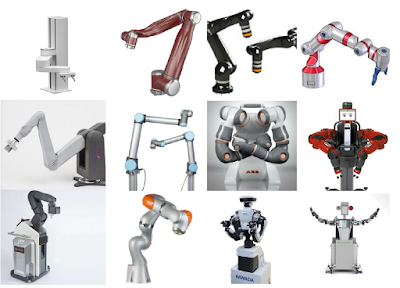With
the huge amount of Robot Manufacturing Companies
available in the industry, it becomes difficult to understand which company one
should side with. Almost all companies provide robots with similar
technological developments. However, Automationar is one of the leading one-stop
robotics suppliers in China. We provide an endless number of high-efficiency in
robotic solutions for manufacturing and production assemblies. These robots
vary in models, size, design, and productivity. Let’s check out some of the details
related to the SCARA robot:
1.
SCARA
SCARA is the abbreviation of Selective Compliance Assembly Robot Arm or Selective Compliance Articulated Robot Arm. It simply means that these robot arms have been designed to perform a specified task. It was developed by Hiroshi Makino, a Japanese professor at the University of Yamanashi.
2.
Tasks
These robots were developed for heavy
repetitive work such as picking up and placing heavy materials from one place
to another. It is particularly helpful during the assembly and distribution
stage. Due to the high tolerance in the payload, certain tasks including
tightening the lid to a jar or stacking a set of plywood for transport can be
easily performed by the SCARA robot. These robot arms are also very useful to
perform tasks that are precision-based such as, screwing driving.
3.
Portability
These machines have been developed to
eventually fold up on command which serves as a ‘self-packing’ advantage. This
allows the employees to move the robot to and from its designated post. These
robots are comparatively compact to the rest of the machines; however, they
won’t necessarily fit in your purse either. They have been designed to be
compatible with frequent movement and a steady position.
4.
High-performance
The SCARA falls under the high-performance robots. The rest of the robotic arms have 360° rotatable joints at the base, shoulder, elbows, and wrists. Whereas, these compact robots have a 360° rotatable joint at the base and up to 150° rotatable joints at the elbows and wrists. For technical reasons, the repeatability speed increases to +/-0.01mm on the SCARA robots. On the other hand, the collaborative robots perform at a lower rate, delivering a repeatability rate of +/-0.01mm thus leading to a greater number of the final output.
5.
Minimum Maintenance
The rest of the models and makes of
the robots require a higher level of regular maintenance. Whereas, the SCARA models require a very
nominal amount of maintenance at an even less of a frequency. SCARA Robot
Manufacturers categorize this machine as one of the easiest
robotic arms to take care of.
All
the factors, features and elements of each robotic arm may vary but they have
simply been designed to perform different tasks. Each of them comes with a
different purpose. Industrial Robot
Manufacturers allow the tasks to be completed with utmost
efficiency and reliability.







